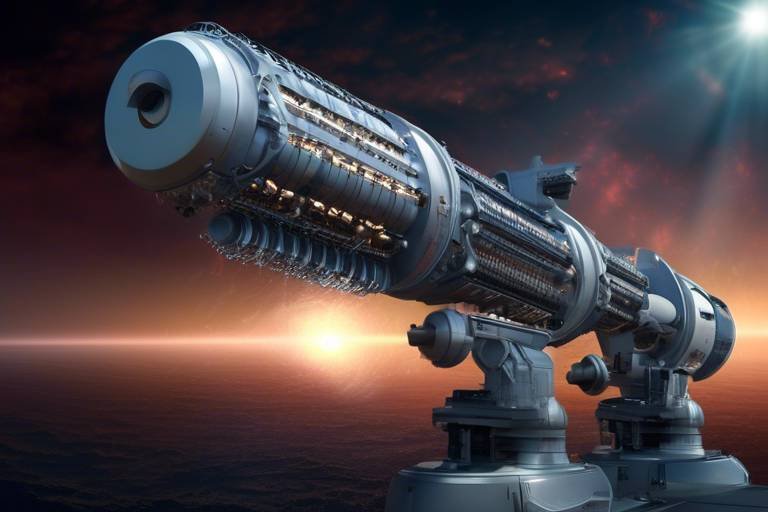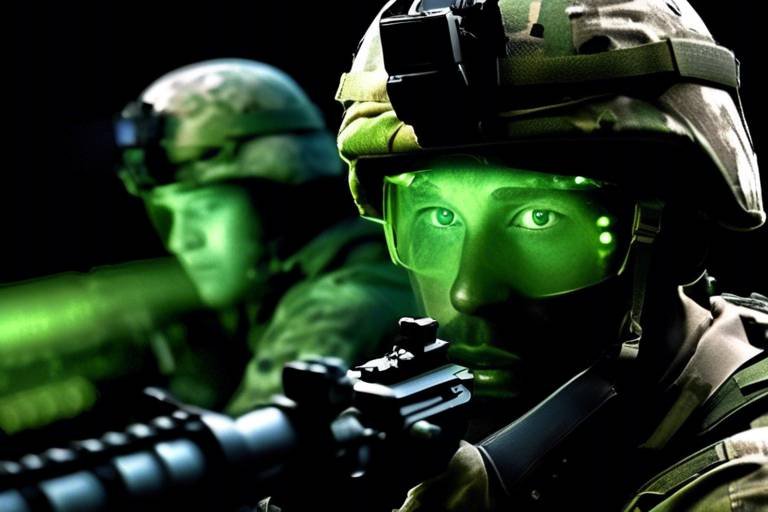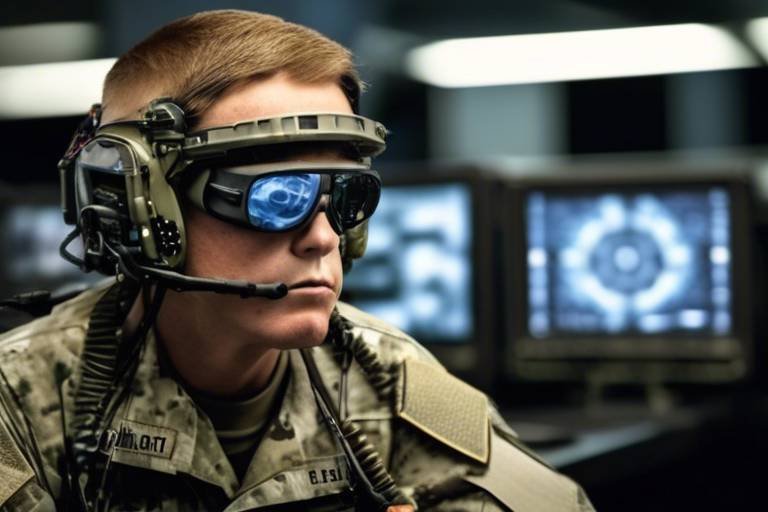Quantum Cryptography in Defense Communication Systems
In today's rapidly evolving technological landscape, the need for secure communication in defense operations has never been more critical. As military strategies increasingly rely on digital platforms, the vulnerabilities associated with traditional communication methods have come to light. Enter quantum cryptography, a revolutionary approach that promises to redefine the security of defense communication systems. By leveraging the principles of quantum mechanics, this cutting-edge technology offers unparalleled protection against eavesdropping and cyberattacks, making it a game-changer for military operations worldwide.
Imagine a world where every message transmitted between defense units is immune to interception, where the very act of spying on communications alerts the sender to the breach. This is the promise of quantum cryptography. Unlike classical cryptographic methods, which can be compromised through various means, quantum cryptography utilizes the laws of physics to create a secure communication channel. This technology is not just a theoretical concept; it's becoming a practical solution for the challenges faced by modern military operations.
As we delve deeper into this fascinating subject, we will explore the fundamental principles of quantum cryptography, its importance in defense communication, and the specific applications that make it indispensable for military operations. We'll also examine the threats that defense communication systems face and how quantum cryptography serves as a robust shield against these risks. With the stakes so high, understanding the implications of quantum cryptography is essential for anyone involved in defense strategy and cybersecurity.
At its core, quantum cryptography is based on the principles of quantum mechanics, particularly superposition and entanglement. These principles allow for the creation of quantum keys that are fundamentally secure. Unlike classical keys, which can be copied and intercepted, quantum keys are unique and can only be used once. This means that any attempt to eavesdrop on the communication will result in detectable changes to the quantum state, alerting the sender and receiver to the presence of an intruder.
One of the most notable implementations of quantum cryptography is Quantum Key Distribution (QKD). This method allows two parties to generate a shared, secret random key, which can then be used for encrypting messages. The beauty of QKD lies in its ability to detect any interception attempts, providing a level of security that traditional methods simply cannot match. As we explore the importance of secure communication in defense operations, it's clear that quantum cryptography offers a promising solution to the inherent vulnerabilities of our current systems.
Secure communication is the backbone of effective defense operations. In an era where information breaches can lead to catastrophic consequences, the military must prioritize the integrity and confidentiality of its communications. The risks associated with compromised data are immense, ranging from loss of sensitive intelligence to endangering the lives of personnel in the field. With cyberattacks becoming increasingly sophisticated, the traditional methods of securing communication are falling short.
Here are some of the critical reasons why secure communication is vital for defense operations:
- Protection of Sensitive Information: Defense operations often involve classified information that, if leaked, could jeopardize national security.
- Operational Integrity: Secure communication ensures that orders and intelligence are transmitted without interference or alteration.
- Trust Among Allies: In joint operations, secure communication fosters trust and collaboration among allied forces.
As we navigate through the complexities of modern warfare, the need for advanced security measures like quantum cryptography becomes increasingly apparent. By investing in these technologies, military organizations can safeguard their communication systems against emerging threats.
The landscape of defense communication is fraught with challenges. From cyberattacks targeting communication networks to espionage that seeks to extract sensitive information, the threats are diverse and evolving. Signal interception remains a persistent concern, as adversaries continuously develop new methods to compromise communications. Quantum cryptography stands out as a formidable defense against these threats.
Let's take a closer look at some of the significant threats:
- Cyberattacks: These attacks can disrupt communications, manipulate data, and even hijack systems.
- Espionage: State and non-state actors alike seek to gain access to sensitive information for strategic advantages.
- Signal Interception: Traditional methods of communication can be easily intercepted, leading to potential security breaches.
By implementing quantum cryptography, defense communication systems can enhance their resilience against these threats, ensuring that sensitive information remains secure and intact.
- What is quantum cryptography? Quantum cryptography is a method of securing communication by leveraging the principles of quantum mechanics, making it virtually immune to eavesdropping.
- How does Quantum Key Distribution (QKD) work? QKD allows two parties to generate a shared, secret key that can be used for encryption, with the ability to detect any interception attempts.
- What are the main benefits of using quantum cryptography in defense? It provides enhanced security against cyberattacks, protects sensitive information, and ensures operational integrity.

Introduction to Quantum Cryptography
Quantum cryptography is a revolutionary approach to securing information that leverages the principles of quantum mechanics. Unlike traditional cryptographic methods, which rely on complex mathematical algorithms to protect data, quantum cryptography uses the unique properties of quantum bits, or qubits, to ensure that any attempt to intercept or tamper with information is immediately detectable. This foundational difference is what sets quantum cryptography apart and makes it a game-changer in the realm of secure communications.
At its core, quantum cryptography operates on two fundamental principles: superposition and entanglement. Superposition allows qubits to exist in multiple states at once, which means that they can represent both 0s and 1s simultaneously. This property enables the creation of keys that are virtually impossible to predict or replicate. On the other hand, entanglement refers to the phenomenon where two qubits become interconnected in such a way that the state of one instantly influences the state of the other, regardless of the distance separating them. This ensures that any changes made to one qubit will be reflected in its entangled partner, providing a secure channel for communication.
In the context of defense communication systems, the implications are profound. Imagine a world where military communications are impervious to eavesdroppers and hackers. The ability to detect unauthorized access in real-time means that sensitive information can be transmitted without the fear of interception. This is not just theoretical; it is becoming a reality as research and development in quantum technologies advance.
To illustrate the differences between quantum cryptography and classical methods, consider the following table:
| Aspect | Classical Cryptography | Quantum Cryptography |
|---|---|---|
| Security Basis | Mathematical algorithms | Quantum mechanics principles |
| Key Distribution | Vulnerable to attacks | Secure against eavesdropping |
| Detection of Interception | Possible but not guaranteed | Immediate detection of any intrusion |
As military operations increasingly rely on digital communication, the need for robust security measures has never been more critical. The risks associated with information breaches can lead to dire consequences, including compromised missions, loss of lives, and national security threats. Therefore, understanding and implementing quantum cryptography in defense systems is not just an option; it is a necessity.
In conclusion, quantum cryptography represents a significant leap forward in securing communication systems, particularly in defense operations. Its unique approach to data protection, built on the principles of quantum mechanics, offers a level of security that traditional methods simply cannot match. As we delve deeper into the applications and implications of this technology, it becomes clear that the future of secure communication is intertwined with the advancements in quantum cryptography.
- What is quantum cryptography? Quantum cryptography is a method of securing communication by using the principles of quantum mechanics, making it nearly impossible for unauthorized parties to intercept information without detection.
- How does quantum key distribution work? Quantum key distribution (QKD) enables two parties to generate a shared, secret random key, which can be used for secure communication. Any attempt to eavesdrop on this key will alter its state, alerting the parties involved.
- What are the main benefits of quantum cryptography? The main benefits include enhanced security against eavesdropping, real-time detection of interception, and the ability to securely share sensitive information over long distances.

Importance of Secure Communication
In the realm of defense operations, the significance of secure communication cannot be overstated. Imagine a battlefield where information flows freely, but every message can be intercepted or altered by the enemy. This scenario paints a grim picture of the potential consequences of compromised data. Secure communication is not just a luxury; it is a necessity for the safety and success of military missions. It ensures that sensitive information remains confidential, thereby protecting the integrity of operations and the lives of personnel involved.
The stakes are incredibly high when it comes to defense communication. A single breach can lead to disastrous outcomes, including loss of strategic advantage, exposure of classified operations, and even endangerment of military personnel. In today's world, where cyber threats are evolving at an alarming rate, the need for robust security measures is more pressing than ever. The risks associated with information breaches are not merely theoretical; they are very real and can have severe implications. For instance, consider the following potential consequences:
- Loss of Confidentiality: Unauthorized access to sensitive data can lead to the exposure of military strategies.
- Operational Disruption: Compromised communications can disrupt missions, causing delays and confusion.
- Threat to Personnel Safety: If enemy forces intercept communications, it could endanger the lives of troops on the ground.
Moreover, the complexity of modern warfare requires that communication systems be not only secure but also adaptable and resilient. With the rise of sophisticated cyberattacks and espionage tactics, traditional methods of securing communication are becoming increasingly inadequate. The introduction of quantum cryptography offers a revolutionary approach to safeguarding defense communications. By leveraging the principles of quantum mechanics, this cutting-edge technology ensures that any attempt to intercept or tamper with communications can be detected immediately, thus maintaining the integrity and confidentiality of the information being transmitted.
In summary, the importance of secure communication in defense operations cannot be emphasized enough. As threats continue to evolve, so must our methods of protecting vital information. The adoption of advanced technologies like quantum cryptography is not just an option; it is a crucial step towards ensuring that military operations can proceed without the looming shadow of compromised communication. The future of defense communication relies on our ability to innovate and implement effective security measures that can withstand the challenges of tomorrow.
Q1: Why is secure communication critical in defense operations?
A1: Secure communication is essential to protect sensitive information from interception and tampering, which could lead to operational failures and endanger personnel.
Q2: How does quantum cryptography enhance communication security?
A2: Quantum cryptography uses principles of quantum mechanics to create secure communication channels that can detect any unauthorized access, thus ensuring data integrity and confidentiality.
Q3: What are the potential consequences of a communication breach in defense?
A3: A communication breach can lead to loss of confidentiality, operational disruption, and threats to personnel safety, which can severely impact military effectiveness.

Threats to Defense Communications
In today's fast-paced digital world, defense communication systems are under constant threat from a multitude of sources. These threats can range from sophisticated cyberattacks to traditional espionage tactics, each posing a significant risk to national security. Imagine a high-stakes game of chess, where each move can have dire consequences; this is the reality for military operations reliant on secure communication. The stakes are incredibly high, and the implications of compromised data can be catastrophic.
One of the most pressing concerns is the rise of cyberattacks. These attacks can be executed by state-sponsored actors or independent hackers, targeting communication networks to steal sensitive information or disrupt operations. For instance, a successful breach can lead to the exposure of classified military strategies, ultimately jeopardizing missions and putting lives at risk. The sophistication of these attacks is constantly evolving, making it essential for defense systems to stay one step ahead.
Another significant threat is espionage, which has been a long-standing issue in military communications. Espionage can take many forms, from human intelligence gathering to advanced technological surveillance. The use of drones and other reconnaissance tools can allow adversaries to intercept communications, leading to potential leaks of critical information. In essence, espionage is like a shadow lurking in the background, always ready to capitalize on any weaknesses in communication protocols.
Furthermore, signal interception poses a considerable challenge. With the increasing reliance on wireless communication, the risk of signals being intercepted by unauthorized entities has grown. Imagine trying to send a confidential message through an open window; it’s only a matter of time before someone eavesdrops. This vulnerability necessitates robust encryption methods to protect against unauthorized access and ensure that sensitive information remains confidential.
To illustrate the various threats faced by defense communication systems, consider the following table:
| Type of Threat | Description | Potential Impact |
|---|---|---|
| Cyberattacks | Malicious attempts to breach systems and steal data. | Loss of sensitive information, operational disruption. |
| Espionage | Intelligence gathering by adversaries. | Exposure of military strategies, compromised missions. |
| Signal Interception | Unauthorized access to communications. | Leaked information, loss of operational security. |
In light of these threats, the implementation of quantum cryptography emerges as a beacon of hope. By leveraging the principles of quantum mechanics, such as superposition and entanglement, quantum cryptography offers a way to secure communications against these evolving threats. The technology ensures that any attempt to intercept or tamper with the data will be detected, making it a formidable defense against the risks that loom over defense communication systems.
- What is quantum cryptography? Quantum cryptography is a method of securing communications using the principles of quantum mechanics, ensuring that any interception of data can be detected.
- How does quantum cryptography enhance security? It utilizes quantum key distribution (QKD) to create secure keys for encryption, making it nearly impossible for unauthorized parties to access the information.
- What are the main threats to defense communications? The main threats include cyberattacks, espionage, and signal interception, each posing significant risks to national security.
- Can quantum cryptography prevent all threats? While it significantly enhances security, no system is entirely foolproof. Continuous advancements in technology and tactics necessitate ongoing improvements in security measures.
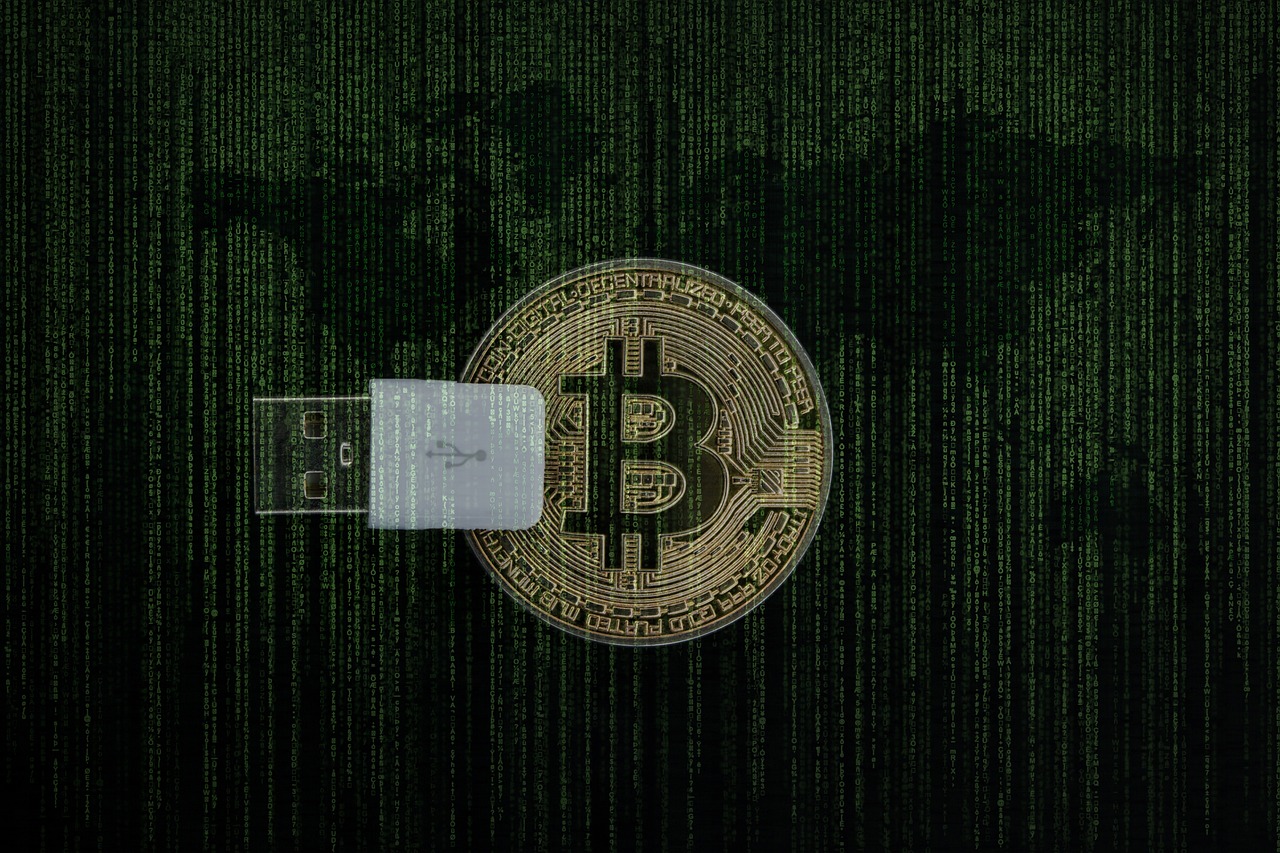
Cybersecurity Challenges
In the ever-evolving landscape of defense communications, loom large, creating an urgent need for innovative solutions. The stakes are incredibly high; a single breach can lead to catastrophic consequences, jeopardizing national security and the safety of personnel. Traditional methods of securing data, while useful, often fall short against the sophisticated tactics employed by cyber adversaries. This is where quantum cryptography steps in, offering a new frontier in the battle against cyber threats.
One of the primary challenges in the defense sector is the rapid pace of technological advancement. As new technologies emerge, so do new vulnerabilities. Cyber attackers are constantly developing more sophisticated methods to infiltrate systems, making it crucial for defense organizations to stay one step ahead. Quantum cryptography provides a robust framework that can adapt to these challenges, utilizing the principles of quantum mechanics to secure data transmission in a way that classical cryptographic methods cannot.
Moreover, the complexity of integrating quantum technologies into existing defense communication systems poses a significant hurdle. Military operations rely on a vast array of interconnected systems, and introducing quantum cryptography requires careful planning and execution. This integration is not just about replacing old systems; it involves a comprehensive overhaul of how data is transmitted and secured. The transition can be resource-intensive and time-consuming, which can deter organizations from making the leap.
Another challenge is the cost implications associated with implementing quantum cryptography. Developing and deploying quantum communication systems often requires substantial investment in new hardware and infrastructure. For many defense organizations, particularly those operating under tight budgets, these costs can be prohibitive. However, the potential for enhanced security and the prevention of costly data breaches may justify the initial expenditure.
Finally, there is a significant skills gap in the workforce when it comes to quantum technologies. The intricate nature of quantum cryptography demands a level of expertise that is currently in short supply. Training personnel to understand and effectively utilize these advanced systems is essential for successful implementation. Without a skilled workforce, even the most sophisticated quantum systems can fall short of their potential.
In summary, while quantum cryptography offers promising solutions to the cybersecurity challenges faced by defense communication systems, it is not without its obstacles. The need for rapid technological adaptation, integration complexities, cost concerns, and a skilled workforce all present significant challenges that must be addressed. Nevertheless, the potential benefits of enhanced security make it a compelling area for further exploration and investment.
- What is quantum cryptography? Quantum cryptography is a method of securing communication by utilizing the principles of quantum mechanics, particularly through quantum key distribution (QKD).
- How does quantum cryptography enhance security? It enhances security by making it nearly impossible for unauthorized parties to intercept or tamper with the transmitted data without being detected.
- What are the main challenges in implementing quantum cryptography? The main challenges include the rapid pace of technological change, integration complexities, cost implications, and a shortage of skilled personnel.
- Can quantum cryptography completely eliminate cybersecurity threats? While it significantly enhances security, no system can guarantee 100% protection against all threats, but it does provide a much stronger defense.

Historical Breaches in Defense
Throughout history, defense communication systems have been the backbone of national security, yet they have also been the target of numerous breaches that have exposed vulnerabilities and highlighted the urgent need for enhanced security measures. One of the most notorious incidents occurred during the Cold War, when the Soviet Union successfully intercepted classified communications from the United States, leading to significant intelligence failures. This breach not only compromised sensitive information but also altered the course of military strategies.
Another pivotal example is the 2007 cyberattack on Estonia, where government and military communications were disrupted by a series of distributed denial-of-service (DDoS) attacks. This incident underscored the risks associated with reliance on digital communication channels and demonstrated how vulnerable defense systems can be to cyber threats. The fallout from such breaches often extends beyond immediate data loss, affecting international relations and public trust in defense capabilities.
Moreover, the Edward Snowden leaks in 2013 revealed the extent of surveillance programs operated by the NSA, including the interception of communications from various defense agencies. This breach not only put sensitive military operations at risk but also sparked a global debate about privacy and security. The implications of such leaks are profound, as they can lead to operational compromises and the exposure of intelligence assets.
In light of these historical breaches, the introduction of quantum cryptography presents a promising avenue for bolstering defense communication security. By employing quantum key distribution (QKD), military operations can ensure that any attempt to intercept communications will be immediately detected, thereby safeguarding sensitive information. The urgency for implementing such advanced security measures is clear, as the stakes are incredibly high in the realm of national defense.
As we reflect on these past incidents, it becomes evident that the integration of quantum cryptography into defense communication systems is not just a technological upgrade; it is a necessary evolution to combat the ever-growing threats in the digital age. The lessons learned from historical breaches serve as a reminder that vigilance and innovation must go hand in hand to protect the integrity of national security.
- What is quantum cryptography? Quantum cryptography is a method of secure communication that uses the principles of quantum mechanics to protect data transmission.
- How does quantum key distribution work? Quantum key distribution allows two parties to generate a shared, secret random key, which can then be used to encrypt and decrypt messages securely.
- Why is secure communication important in defense? Secure communication is crucial in defense to protect sensitive information from potential breaches that could jeopardize national security.
- What are some historical breaches in defense communication? Notable breaches include the Cold War interceptions by the Soviet Union, the 2007 cyberattack on Estonia, and the Edward Snowden leaks.
- What challenges does quantum cryptography face? Challenges include technological barriers, high costs, and the need for skilled personnel to implement and maintain quantum systems.
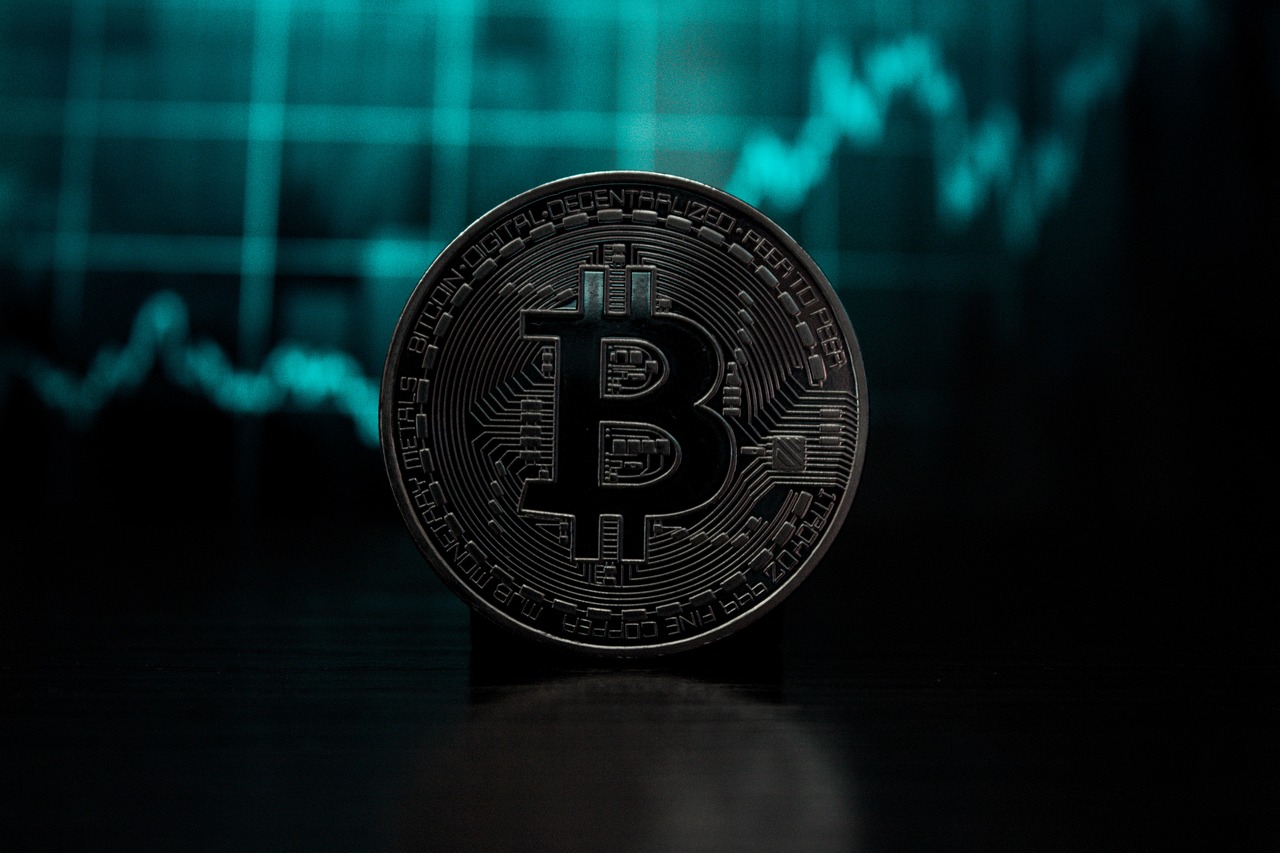
How Quantum Cryptography Works
This article explores the role of quantum cryptography in enhancing the security of defense communication systems, detailing its benefits, challenges, and future implications for military operations.
Quantum cryptography is a fascinating field that merges the principles of quantum mechanics with the need for secure communication. Unlike classical cryptographic methods, which rely on mathematical algorithms to secure data, quantum cryptography uses the unique properties of quantum bits, or qubits. These qubits can exist in multiple states simultaneously (superposition) and can be entangled, meaning the state of one qubit is directly related to the state of another, no matter the distance between them. This fundamental difference not only enhances security but also provides a way to detect eavesdropping attempts, setting the stage for its applications in defense communication systems.
In the realm of defense, secure communication is not just a preference; it's a necessity. The stakes are incredibly high when it comes to military operations, where even a minor information breach can lead to catastrophic consequences. Imagine a scenario where sensitive troop movements or strategic plans are intercepted by adversaries. The implications could be dire, potentially compromising national security and endangering lives. Therefore, the implementation of advanced security measures like quantum cryptography is crucial in safeguarding these vital communications.
Defense communication systems face a myriad of threats, including cyberattacks, espionage, and signal interception. Cybercriminals and hostile nations are constantly developing sophisticated methods to breach these systems. Quantum cryptography offers a robust solution to these challenges by ensuring that any attempt at eavesdropping can be detected immediately. This is achieved through the principles of quantum mechanics, which allow for the creation of secure keys that are virtually impossible to copy without detection.
The defense sector grapples with numerous cybersecurity challenges, including outdated technologies and a shortage of skilled personnel. Traditional encryption methods, while effective, are becoming increasingly vulnerable to advanced hacking techniques. Quantum cryptography, with its innovative approach, provides a new layer of security that can significantly enhance data protection. By utilizing quantum key distribution (QKD), military operations can ensure that their communications remain confidential and secure from prying eyes.
There have been several notable historical breaches in defense communication systems that highlight the urgent need for advanced security measures. For instance, the 2010 Wikileaks incident exposed sensitive diplomatic cables and military documents, demonstrating the vulnerabilities inherent in traditional security protocols. Such breaches not only compromise information but also erode trust in defense capabilities. Quantum cryptography represents a proactive approach to preventing similar incidents in the future, ensuring that sensitive data remains protected.
At its core, quantum cryptography operates on the principles of quantum mechanics, leveraging the unique behaviors of particles at the quantum level. One of the most significant protocols in this field is Quantum Key Distribution (QKD), which allows two parties to generate a shared, secret random key that can be used for encrypted communication. The beauty of QKD lies in its ability to detect eavesdropping. If an unauthorized party attempts to intercept the key, the quantum states of the particles being transmitted will change, alerting the communicating parties to the breach.
To understand how this works, consider the following key principles:
- Superposition: This principle allows qubits to exist in multiple states at once, enabling complex computations and secure key generation.
- Entanglement: When qubits become entangled, the state of one qubit instantly influences the state of another, regardless of the distance separating them. This phenomenon is crucial for secure communication.
- No-Cloning Theorem: This principle states that it is impossible to create an identical copy of an unknown quantum state, which adds an additional layer of security against eavesdropping.
These principles combine to create a system where secure data transmission is not just possible but also verifiable. The use of quantum cryptography in defense communication systems promises a future where information can be shared with confidence, free from the threat of interception.
Exploring specific applications of quantum cryptography in military operations, such as secure communication channels, encrypted data transmission, and real-time intelligence sharing.
Presenting case studies where quantum cryptography has been successfully implemented in defense communication systems, showcasing its effectiveness and real-world benefits.
Discussing emerging trends and technologies in quantum cryptography, including advancements in hardware and potential future applications in defense and beyond.
Identifying the challenges and limitations of implementing quantum cryptography in defense communication systems, including technological barriers, cost implications, and the need for skilled personnel.
Quantum cryptography is a method of securing communications using the principles of quantum mechanics, ensuring that any eavesdropping attempts can be detected.
QKD allows two parties to generate a shared secret key through the transmission of qubits. Any attempt to intercept the key changes the quantum states, alerting the parties involved.
Quantum cryptography provides enhanced security, the ability to detect eavesdropping, and protection against future hacking techniques that may compromise traditional encryption methods.
Yes, challenges include high implementation costs, the need for specialized technology, and a shortage of personnel trained in quantum mechanics and cryptography.
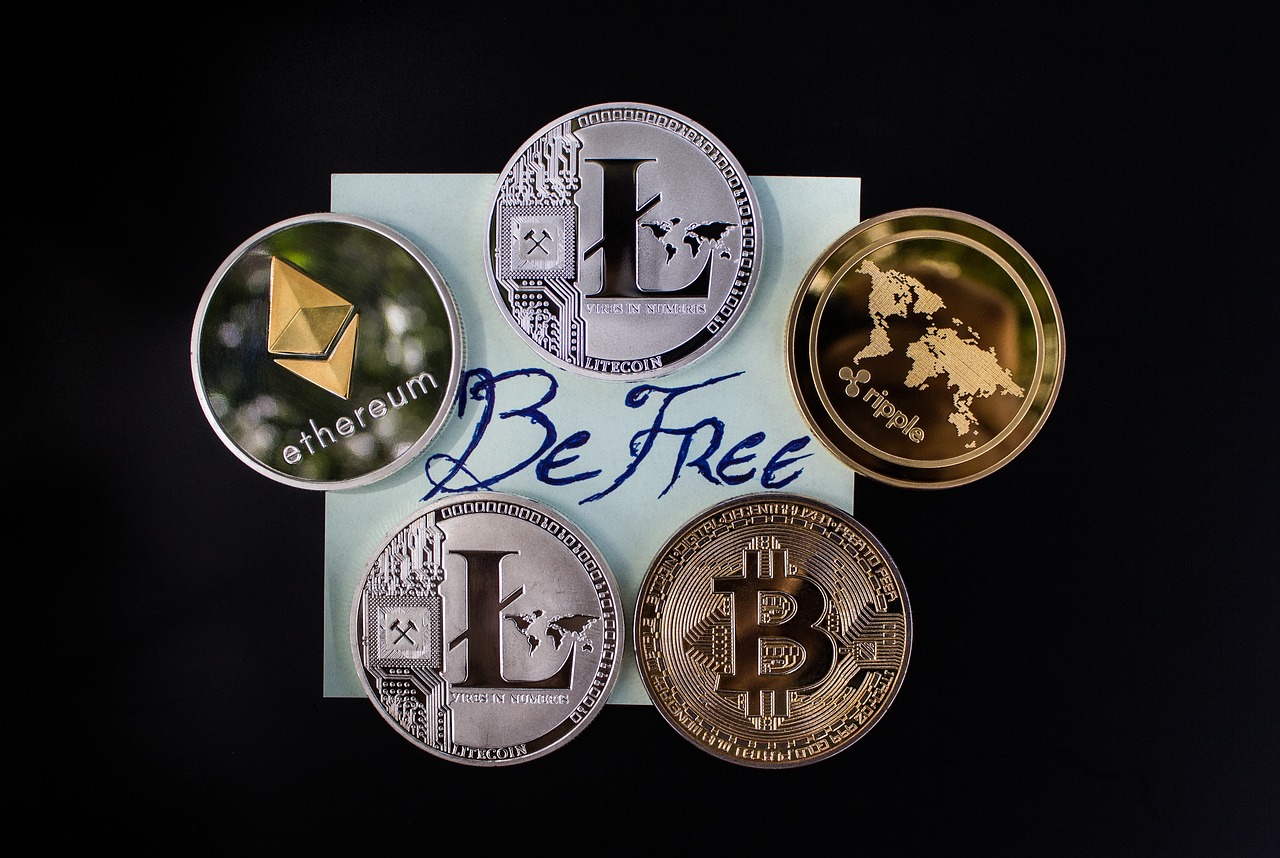
Applications in Military Operations
In the ever-evolving landscape of military operations, the need for secure communication cannot be overstated. Quantum cryptography emerges as a revolutionary technology that holds the potential to transform how defense forces share information. Imagine a world where sensitive data can be transmitted without the fear of interception or hacking. This is not a distant dream; it is becoming a reality through quantum cryptography.
One of the most significant applications of quantum cryptography in military operations is the establishment of secure communication channels. Traditional methods of encryption can be vulnerable to sophisticated attacks, but quantum key distribution (QKD) offers a level of security that is virtually unbreakable. By utilizing the principles of quantum mechanics, QKD allows two parties to share a cryptographic key in such a way that any attempt to eavesdrop would be immediately detectable. This is akin to having a security system that not only locks the door but also alerts you the moment someone tries to tamper with it.
Moreover, quantum cryptography facilitates encrypted data transmission. In military operations, data such as troop movements, supply chain logistics, and intelligence reports need to be shared rapidly and securely. With quantum encryption, this data can be transmitted in real-time without the risk of being intercepted by adversaries. The use of quantum entanglement ensures that any alteration of the transmitted data will be noticed instantly, providing a robust safeguard against cyber threats.
Another critical application is in real-time intelligence sharing. In the heat of battle, timely information can mean the difference between success and failure. Quantum cryptography allows for the secure exchange of intelligence data among various branches of the military, ensuring that everyone is on the same page. This capability not only enhances operational efficiency but also strengthens the overall security posture of military forces.
To illustrate the effectiveness of quantum cryptography in military applications, consider the following table that highlights key use cases:
| Application | Description | Benefits |
|---|---|---|
| Secure Communication Channels | Establishing encrypted lines of communication between units. | Prevents eavesdropping and ensures data integrity. |
| Encrypted Data Transmission | Securely transmitting sensitive information. | Real-time protection against interception. |
| Real-time Intelligence Sharing | Sharing crucial operational data among forces. | Enhances coordination and response times. |
As military operations become increasingly reliant on technology, the integration of quantum cryptography will play a pivotal role in safeguarding national security. The potential applications are vast and varied, and as the technology matures, we can expect to see even more innovative uses emerge. However, the journey towards widespread adoption is not without its challenges.
- What is quantum cryptography? Quantum cryptography is a method of secure communication that uses the principles of quantum mechanics to encrypt data, making it nearly impossible to intercept without detection.
- How does quantum key distribution work? Quantum key distribution allows two parties to generate a shared, secret random key using quantum mechanics, ensuring that any eavesdropping attempts can be detected.
- What are the main benefits of using quantum cryptography in military operations? The main benefits include enhanced security against cyber threats, real-time data protection, and improved coordination among military units.
- Are there any challenges in implementing quantum cryptography? Yes, challenges include technological barriers, high costs, and the need for skilled personnel to manage and operate quantum systems.

Case Studies of Implementation
Quantum cryptography is not just a theoretical concept; it has been successfully implemented in various defense communication systems, showcasing its potential to revolutionize secure communication. One notable case is the collaboration between the Chinese government and research institutions, which led to the establishment of a quantum communication network that spans over 2,000 kilometers. This network, known as the Quantum Satellite Network, utilizes satellites to facilitate quantum key distribution (QKD), ensuring that sensitive military communications are protected against eavesdropping. The implications of this network are profound, as it allows for secure communication between military bases and command centers, significantly reducing the risk of interception.
Another compelling example comes from the European Union, where a consortium of countries has been working on the Quantum Communication Infrastructure (QCI). This initiative aims to create a secure communication system across Europe, specifically designed for defense applications. The QCI project has successfully demonstrated the feasibility of integrating quantum cryptographic techniques into existing communication frameworks, paving the way for enhanced data protection in military operations. By utilizing quantum entanglement, the system ensures that any attempt to intercept the communication would be immediately detectable, thus providing a robust layer of security.
In the United States, the Department of Defense has been exploring quantum cryptography through various pilot projects. One such project, known as the Quantum Network Prototype, was designed to test the viability of QKD in real-world scenarios. This prototype successfully established secure communication links between different military installations, demonstrating how quantum cryptography can be integrated into defense communication systems. The lessons learned from this implementation have been invaluable, guiding future developments in quantum technologies for military use.
To further illustrate the effectiveness of quantum cryptography, consider the following table that summarizes key aspects of these case studies:
| Case Study | Location | Key Features | Outcome |
|---|---|---|---|
| Quantum Satellite Network | China | Over 2,000 km network, satellite-based QKD | Secure military communications |
| Quantum Communication Infrastructure | European Union | Integration with existing systems, entanglement-based security | Enhanced data protection |
| Quantum Network Prototype | United States | Real-world pilot projects, secure links | Valuable insights for future technologies |
These case studies not only highlight the practical applications of quantum cryptography in defense communication systems but also emphasize the growing recognition of its importance in ensuring secure communications. As military operations become increasingly reliant on technology, the integration of quantum cryptography will be crucial in safeguarding sensitive information from potential threats.
- What is quantum cryptography?
Quantum cryptography is a method of securing communication by using the principles of quantum mechanics, particularly quantum key distribution (QKD) to create secure communication channels that are virtually immune to eavesdropping. - How does quantum key distribution work?
QKD allows two parties to generate a shared secret key using quantum bits (qubits). Any attempt to eavesdrop on this key will disturb the quantum states, alerting the parties to the presence of an intruder. - What are the benefits of using quantum cryptography in defense?
Quantum cryptography offers enhanced security against cyberattacks, ensures the integrity of sensitive communications, and provides a robust framework for secure data transmission in military operations. - Are there any limitations to quantum cryptography?
Yes, challenges include technological barriers, high costs of implementation, and the need for specialized personnel to manage and operate quantum communication systems.

Future Trends in Quantum Cryptography
As we stand on the brink of a technological revolution, quantum cryptography is poised to redefine the landscape of secure communications. The future of this field is not just a continuation of current practices; it promises to be an explosive evolution that will integrate seamlessly into our digital lives. Imagine a world where our communications are not only secure but also unbreakable, thanks to the principles of quantum mechanics. This is not just science fiction; it’s becoming a reality.
One of the most exciting trends in quantum cryptography is the advancement of Quantum Key Distribution (QKD). This technology allows two parties to generate a shared, secret random key, which can then be used to encrypt and decrypt messages. What makes QKD unique is its reliance on the laws of quantum physics, particularly the phenomena of superposition and entanglement. These principles ensure that any attempt to eavesdrop on the key will be detected, making it a robust solution for secure communication. As QKD technology advances, we can expect it to become more accessible and cost-effective, paving the way for widespread adoption in various sectors, particularly in defense.
Moreover, the integration of quantum cryptography with artificial intelligence (AI) is another trend to watch. AI can enhance the efficiency of quantum systems, enabling faster processing and more sophisticated algorithms for data encryption and decryption. The combination of AI and quantum cryptography could lead to systems that not only secure communications but also adapt in real-time to emerging threats, providing an unprecedented level of security.
As we look towards the future, the deployment of quantum networks is also on the horizon. These networks will allow quantum devices to communicate with each other over long distances, creating a global infrastructure for secure communication. The potential applications are vast, ranging from secure military communications to protecting sensitive financial transactions. In fact, several countries are already investing heavily in the development of quantum internet technologies, aiming to create a framework that can withstand even the most sophisticated cyber threats.
However, with great potential comes significant challenges. The implementation of quantum cryptography is not without its hurdles. Issues such as technological barriers, cost implications, and the need for skilled personnel present real obstacles. For instance, the current infrastructure in many defense communication systems may not be compatible with quantum technologies, necessitating substantial upgrades. Additionally, the training of personnel to manage and operate these advanced systems is crucial for their successful implementation.
Despite these challenges, the future of quantum cryptography is bright. As research continues and technology evolves, we can expect to see innovative solutions that overcome current limitations. The military, in particular, stands to gain immensely from these advancements, ensuring that their communication systems remain secure against ever-evolving threats. The implications of this technology extend beyond defense; they could revolutionize industries such as finance, healthcare, and even personal communication.
In summary, the future trends in quantum cryptography are not just about enhancing security; they are about transforming how we communicate in a digital world fraught with risks. With ongoing research and development, we are on the path to a future where our communications are as secure as they are seamless.
- What is quantum cryptography? Quantum cryptography is a method of secure communication that uses the principles of quantum mechanics to encrypt data, ensuring that any attempt at eavesdropping can be detected.
- How does Quantum Key Distribution (QKD) work? QKD allows two parties to share a secret key by encoding information in quantum states. Any interception of this key would disturb the quantum states, alerting the parties to a potential breach.
- What are the main challenges in implementing quantum cryptography? Key challenges include technological barriers, high costs, and the need for specialized personnel to manage quantum systems.
- How can quantum cryptography benefit military operations? Quantum cryptography can provide secure communication channels that are resistant to cyberattacks, ensuring the integrity and confidentiality of sensitive military information.

Challenges and Limitations
As promising as quantum cryptography appears to be, it’s not without its share of challenges and limitations. One of the primary hurdles is the technological barrier. Implementing quantum cryptography requires sophisticated hardware and infrastructure that many military organizations may not currently possess. This technology is still in its infancy, and while it shows great potential, the necessary components for widespread use are expensive and complex to manufacture.
Moreover, the cost implications of transitioning to quantum cryptography can be daunting. Investing in new systems, training personnel, and maintaining cutting-edge technology can strain defense budgets, especially in times of fiscal constraints. The question arises: can governments justify the expenses when traditional methods have been in place for so long? This leads to a crucial consideration of return on investment versus risk management.
Another significant challenge is the need for skilled personnel. Quantum cryptography is a highly specialized field, and there is currently a shortage of experts who can implement and manage these systems effectively. Training existing staff or recruiting new talent can be time-consuming and costly. The military must not only invest in the technology but also in the people who will operate it. Without a knowledgeable workforce, even the most advanced systems could falter.
Additionally, there are concerns regarding interoperability with existing communication systems. Many defense communication networks have been built over decades, using traditional cryptographic methods. Integrating quantum cryptography into these established systems can be a complex process, requiring significant adjustments and potential vulnerabilities during the transition phase. The idea of mixing old and new technologies often raises eyebrows, as it can inadvertently create gaps in security.
Lastly, while quantum cryptography offers enhanced security, it does not eliminate all risks. Quantum attacks are a theoretical concern, where adversaries could potentially exploit weaknesses in quantum systems. Although this is still largely speculative, it highlights the need for ongoing research and development to stay ahead of potential threats.
In summary, while quantum cryptography holds incredible promise for enhancing security in defense communication systems, it brings forth a plethora of challenges that must be addressed. From technological barriers and cost implications to the need for skilled personnel and interoperability issues, the path to widespread adoption is fraught with obstacles. Overcoming these challenges will require a concerted effort from military organizations, governments, and the scientific community alike.
- What is quantum cryptography?
Quantum cryptography is a method of secure communication that uses the principles of quantum mechanics to protect data. - Why is quantum cryptography important for defense?
It enhances the security of communication systems, making it much harder for unauthorized entities to intercept or tamper with sensitive information. - What are the main challenges of implementing quantum cryptography?
The main challenges include technological barriers, high costs, a shortage of skilled personnel, interoperability with existing systems, and potential vulnerabilities. - How does quantum cryptography differ from classical cryptography?
Quantum cryptography relies on the principles of quantum mechanics, such as superposition and entanglement, whereas classical cryptography is based on mathematical algorithms.
Frequently Asked Questions
- What is quantum cryptography?
Quantum cryptography is a cutting-edge technology that uses the principles of quantum mechanics to secure data transmission. Unlike traditional cryptographic methods, which rely on mathematical algorithms, quantum cryptography leverages phenomena such as superposition and entanglement to create secure communication channels that are nearly impossible to intercept without detection.
- How does quantum key distribution (QKD) work?
Quantum key distribution (QKD) is a method used in quantum cryptography to securely share encryption keys between parties. It involves sending quantum bits (qubits) over a communication channel. If an eavesdropper attempts to intercept the qubits, the quantum state changes, alerting the communicating parties to the presence of a breach. This ensures that only the intended recipients can access the keys needed to decrypt messages.
- Why is secure communication important in defense?
Secure communication is crucial in defense operations because it protects sensitive information from falling into the wrong hands. Breaches in communication can lead to espionage, loss of strategic advantage, and even jeopardize national security. Quantum cryptography offers a robust solution to safeguard this information against various threats, including cyberattacks and signal interception.
- What are the main threats to defense communication systems?
Defense communication systems face several threats, including cyberattacks, espionage, and signal interception. These threats can compromise sensitive data and operational integrity. Quantum cryptography can help mitigate these risks by providing a level of security that traditional methods cannot achieve, ensuring that communications remain confidential and tamper-proof.
- What are the challenges of implementing quantum cryptography?
Implementing quantum cryptography comes with challenges such as technological barriers, high costs, and the need for specialized personnel. The technology is still evolving, and integrating it into existing defense communication systems requires significant investment and training to ensure effective deployment.
- Are there real-world examples of quantum cryptography in defense?
Yes, there are several case studies showcasing the successful implementation of quantum cryptography in defense communication systems. These examples highlight its effectiveness in creating secure communication channels and protecting sensitive military data during operations, demonstrating the technology's real-world benefits.
- What are the future trends in quantum cryptography?
The future of quantum cryptography looks promising, with advancements in hardware and potential new applications in various fields, including defense. Emerging trends include the development of more efficient QKD systems and the exploration of quantum networks that could revolutionize secure communication on a larger scale.










